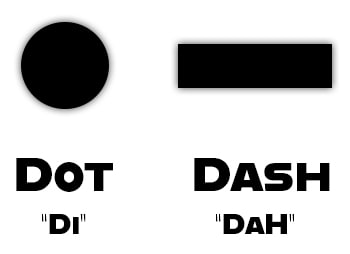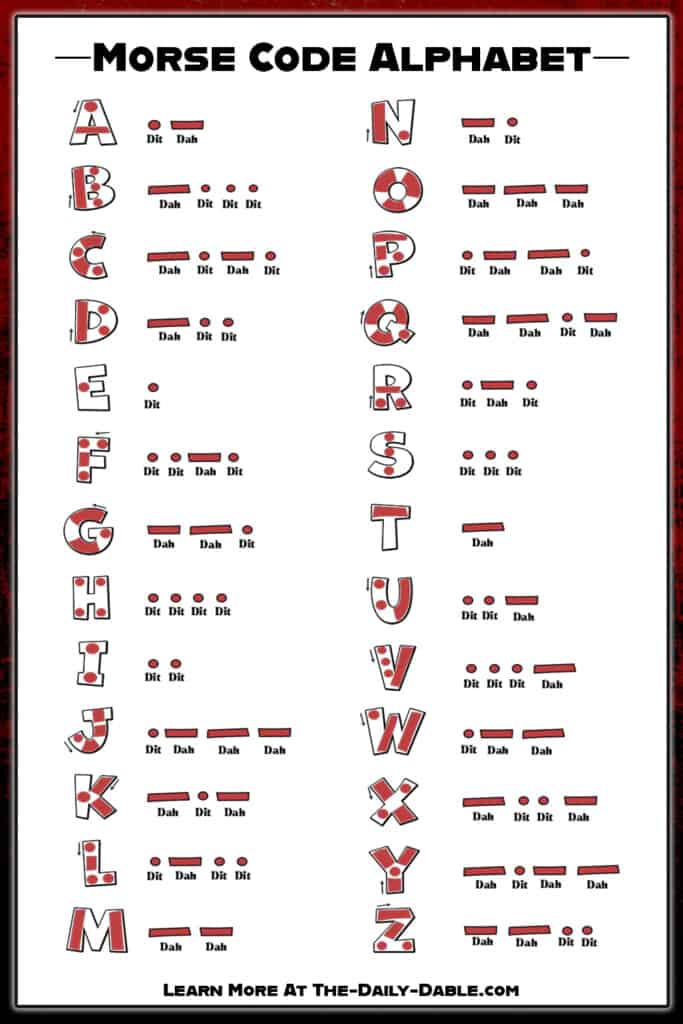You never know what strange situations you’ll find yourself in one day, nor what unusual and seemingly worthless skills could help you in those situations.
You never know what skills could one day save your life.
But is flashing Morse code with a light of those obscure skills, and is there any benefit to learning it?
Using light for Morse code is very simple. Dots are expressed with short bursts of light, while dashes are displayed with longer beams. Transmitting Morse code with light provides line-of-sight security, meaning only those that can see the light can receive the transmission. A real-world example is the US Navy ships that use signal lamps to communicate during radio silence.
So let’s look at how to use Morse code with light and how you can use it to send and receive your own line-of-sight transmissions! Even if you are never forced to use it, you could someday use it to obscurely flash someone I love you with Morse code.
Table of Contents
Morse Code with Light: The Basics
The first step in learning how to use Morse code with light is learning the basics of Morse code and then learning how to translate that to light signals!
So let’s start with the basics and if you would like a deeper dive into learning Morse code, check out How to Learn and Use Morse Code.
The Dots and Dashes
The entire Morse code system is constructed using two distinct symbols: the dot and the dash.
The dot symbolizes a short and abrupt signal that is typically expressed as the sound “di.”
On the other hand, the dash symbolizes a more prolonged signal and is three times longer than the dot. Dashes are typically expressed as the longer sound “dah.”
Said another way, the timing difference between dots and dashes is a 1:3 ratio.
You can listen to the difference between a dot and a dash using the sound clip below.
By mixing these dots and dashes into varying combinations, we can create letters, numbers, punctuation, and special characters.
For example:
- Morse code for the letter A is • ─
- Morse code for the letter B is ─ • • •
So how do we display these two symbols using light?
Remember how we said that dashes were three times longer than dots? We’re going to use these timing rules using light.
- To symbolize dots, turn your light on for 1 second.
- To symbolize dashes, turn your light on for 3 seconds.
You can, of course, change the timing to meet your needs and skill, but remember to keep the ratio 1:3 between dots and dashes.
Check out the two videos below to see the difference between dots and dashes.
Dots in Morse Code Light
Dashes in Morse Code Light
Morse Code Spacing Rules With Light
In addition to dots and dashes, there are also 3 spacing rules or “pauses” that help the receiver distinguish characters.
Without these timing rules, Morse code transmissions would be one big blur of dots and dashes with no way to recognize the beginning of one letter and the end of another.
The three Morse code spacing rules:
- The time gap between dots and dashes is 1 unit of time—or the same length as one dot.
- The time gap between full letters is 3 units of time—or the same length as one dash.
- The pause between complete words is 7 units of time.
But how do you denote spaces or pauses in morse code with light? Simple, we turn the light off for the length of our pause.
So rather, our three Morse code spacing rules with light would look like this.
- The time gap between dots and dashes is 1 second with the light off.
- The time gap between full letters is 3 seconds with the light off.
- The pause between complete words is 7 seconds with the light off.
Simple enough, right?
With our basics covered, let’s look at how to translate your desired message into Morse code.
Sending Your Morse Code Message With a Flashlight
Alright, so let’s discover how to transmit some Morse code using a flashlight; however, you can use whatever light source you wish.
The first step in sending our Morse code message is transposing it to code.
Using the Morse code alphabet chart below, translate your desired broadcast into Morse code. Use forward slashes between complete words to help yourself quickly distinguish them from each other.
To provide an example, my Morse code message is:
Zombies at the tower
─ ─.. ─ ─ ─ ─ ─ ─… .. . … / . ─ ─ / ─ …. . / ─ ─ ─ ─ .─ ─ . .─.
Now that we have our messages let’s get out our flashlights and start blinking.
Begin flashing your dots and dashes by turning your light on and off, remembering the timing and spacing rules we learned above. Getting your timing right will take practice, but with time it will be as easy as sending a poopy emoji.
Below is an example of my phrase “zombies at the tower” in Morse code using light.
SOS Morse Code With Light
Imagine for a moment that you are out at sea fishing for sharks, and while fighting one onto the boat, you accidentally drop your phone into the shark-infested water.
Livid and ready to call it a day, you hit the ignition, but all you hear is “click.”
The battery is dead, and you have no means to charge it.
Now, most people would float around the ocean until someone passed close enough by to hear them scream.
But not you.
No, you have a flashlight, and you know how to blink the Morse code for SOS and are able to flag down the first boat within sight.
SOS is one of the world’s most known distress signals and has, over the years, saved the lives of thousands of people. It is also extremely easy to learn and remember.
| Morse Code for SOS | … — … |
Below is an example of SOS Morse code light with our standard 1-second dot and 3-second dash timing.
You can also buy flashlights, like the Klarus XT11X, that have an SOS light function, just in case you forget.
Additionally to using light, you can also blink SOS using your eyes.
Morse Code Light Translators
Morse code light translators can convert written text or Morse code into light signals.
These can be in the form of online translators, programmable flashlights, or even Morse code flashlight apps.
My personal favorite is an app called Flashlight With Morse Code.
With this simple app, you can convert any message imaginable into Morse code, using nothing but your phone’s flashlight and keyboard.
You can also change the speed—or WPM— of your transmission, and it has an auto-repeat message feature so you can sleep while your phone flashes SOS!
Conclusion
Using light to transmit Morse code is easy and fun, and could one day even save your life.
I hope that this Morse code guide answered all of your questions and if you would like to learn more about Morse code, consider checking out our other guides, such as 15 Awesome Morse Code Facts You Should Know.
As always, happy dabbling!



